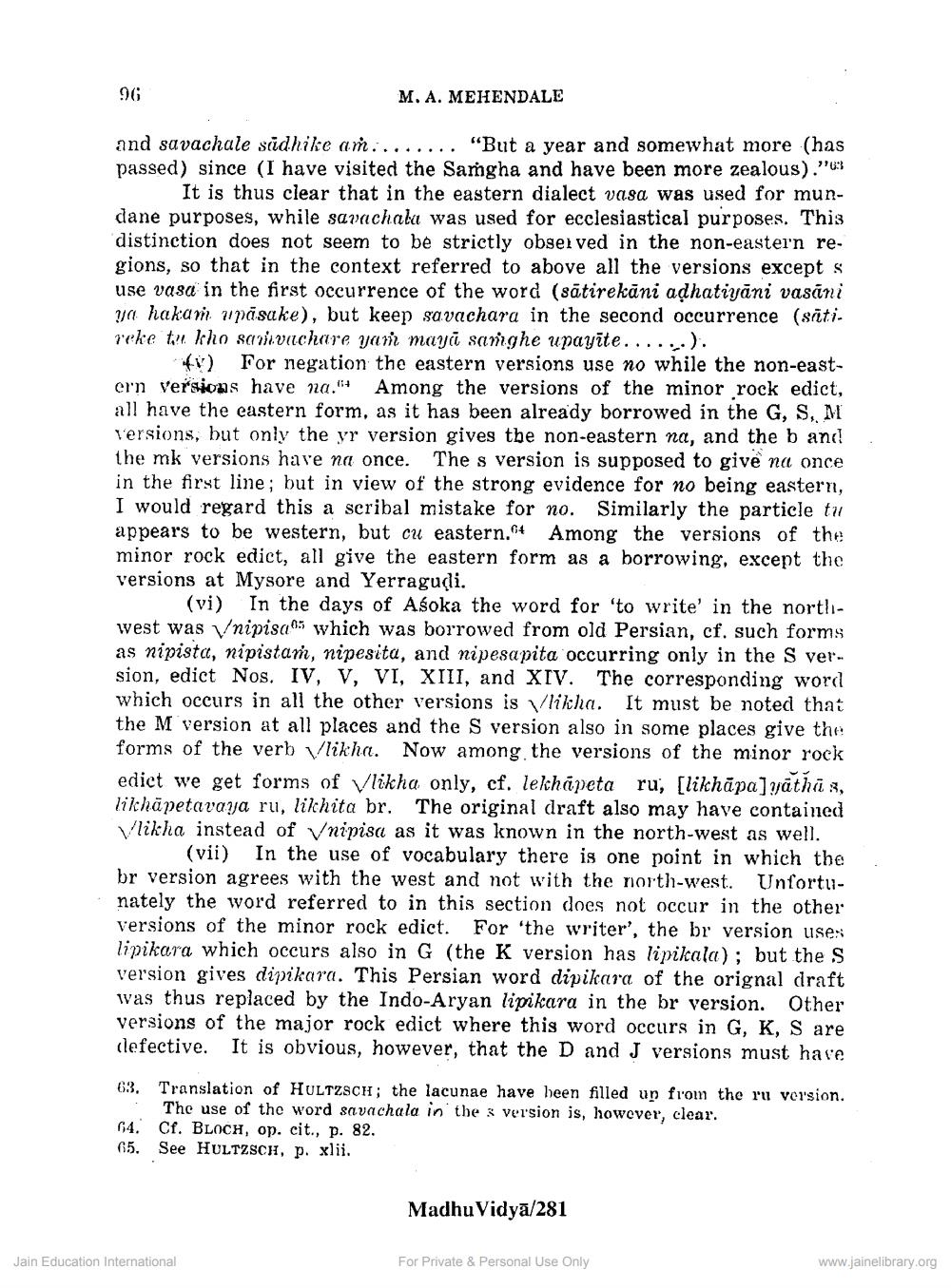________________
96
M. A. MEHENDALE
and savachale südhike am "But a year and somewhat more (has) passed) since (I have visited the Samgha and have been more zealous)." It is thus clear that in the eastern dialect vasa was used for mundane purposes, while savachala was used for ecclesiastical purposes. This distinction does not seem to be strictly observed in the non-eastern regions, so that in the context referred to above all the versions except s use vasa in the first occurrence of the word (satirekani aḍhatiyani vasāni ya hakam pasake), but keep savachara in the second occurrence (antireke tu kho sarvachare ya maya samhghe upayite.....).
4) For negation the eastern versions use no while the non-eastern versions have na." Among the versions of the minor rock edict, all have the eastern form, as it has been already borrowed in the G, S., M versions, but only the yr version gives the non-eastern na, and the b and the mk versions have na once. The s version is supposed to give na once in the first line; but in view of the strong evidence for no being eastern, I would regard this a scribal mistake for no. Similarly the particle tu appears to be western, but cu eastern." Among the versions of the minor rock edict, all give the eastern form as a borrowing, except the versions at Mysore and Yerragudi.
(vi) In the days of Asoka the word for 'to write' in the northwest was nipisa" which was borrowed from old Persian, cf. such forms as nipista, nipistam, nipesita, and nipesapita occurring only in the S version, edict Nos. IV, V, VI, XIII, and XIV. The corresponding word which occurs in all the other versions is likha. It must be noted that the M version at all places and the S version also in some places give the forms of the verb likha. Now among the versions of the minor rock. edict we get forms of Vlikha only, cf. lekhapeta ru, [likhapa] yathas, likhäpetavaya ru, likkita br. The original draft also may have contained Vlikha instead of nipisa as it was known in the north-west as well. (vii) In the use of vocabulary there is one point in which the br version agrees with the west and not with the north-west. Unfortunately the word referred to in this section does not occur in the other versions of the minor rock edict. For 'the writer', the br version uses lipikara which occurs also in G (the K version has lipikala); but the S version gives dipikara. This Persian word dipikara of the orignal draft was thus replaced by the Indo-Aryan lipikara in the br version. Other versions of the major rock edict where this word occurs in G, K, S are defective. It is obvious, however, that the D and J versions must have
63. Translation of HULTZSCH; the lacunae have been filled up from the ru version. The use of the word savachala in the 3 version is, however, clear. 64. Cf. BLOCH, op. cit., p. 82. 65. See HULTZSCH, p. xlii.
Jain Education International
Madhu Vidya/281
For Private & Personal Use Only
www.jainelibrary.org




